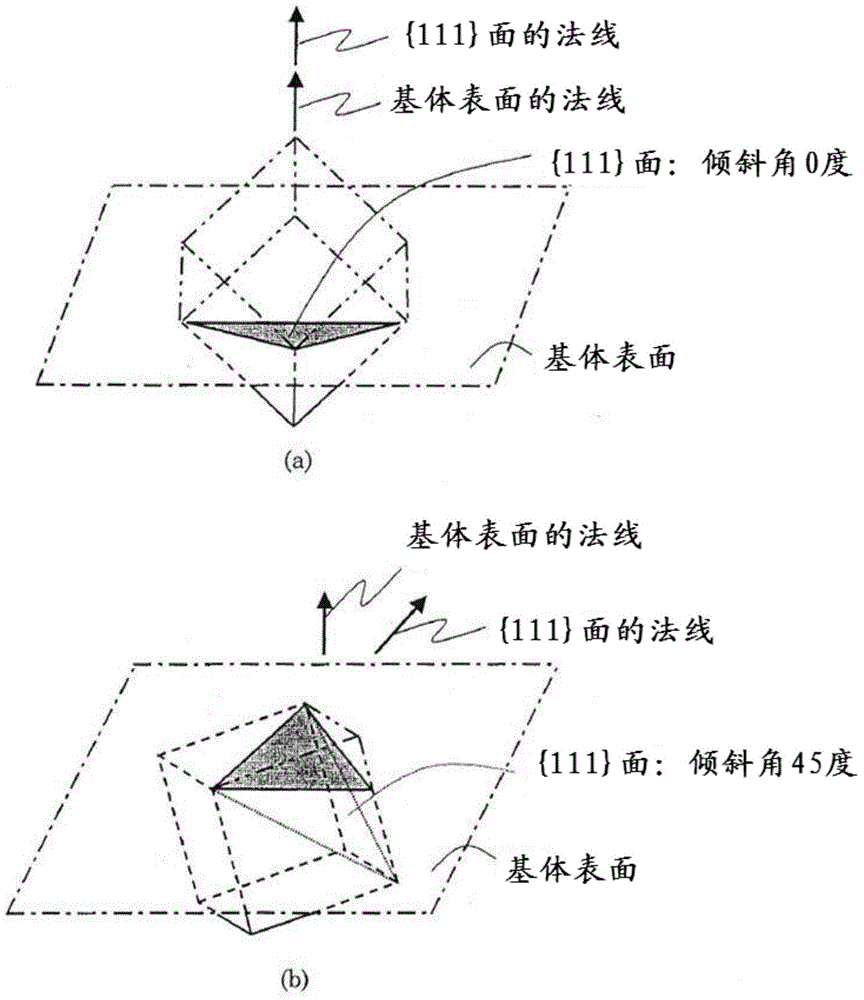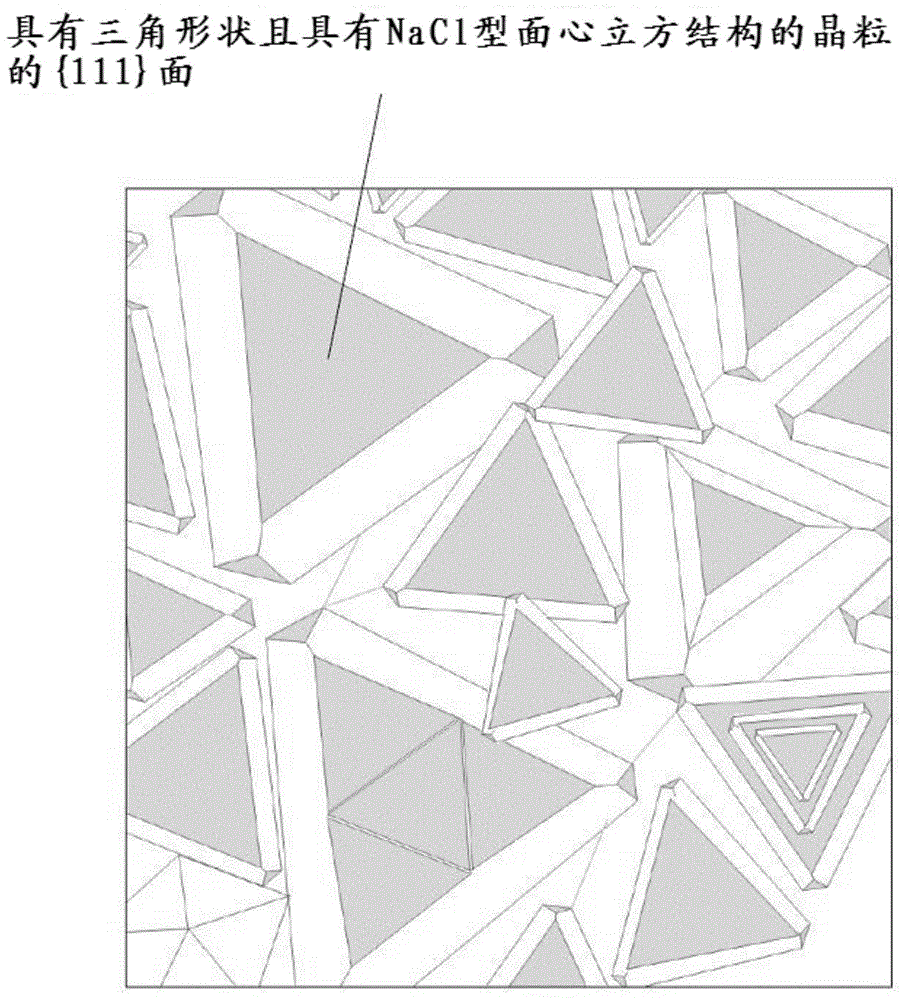A surface coating cutting tool
A cutting tool and surface coating technology, applied in the field of surface coating cutting tools, can solve the problems of inability to increase the Al content X of the film, insufficient chipping resistance, insufficient adhesion strength, etc., and achieve reduced adhesion strength, Excellent abrasion resistance, the effect of reducing peeling resistance
- Summary
- Abstract
- Description
- Claims
- Application Information
AI Technical Summary
Problems solved by technology
Method used
Image
Examples
Embodiment 1
[0091] As raw material powders, WC powder, TiC powder, TaC powder, NbC powder, Cr 3 C 2 powder and Co powder, these raw material powders were blended into the compounding composition shown in Table 1, and paraffin wax was further added, ball milled and mixed in acetone for 24 hours, dried under reduced pressure, and pressed into a green compact of a predetermined shape with a pressure of 98 MPa, In a vacuum of 5 Pa, vacuum sintering is carried out on the green compact at a specified temperature in the range of 1370-1470°C for 1 hour. After sintering, WC-based cemented carbide with the blade shape of ISO standard SEEN1203AFSN is produced respectively. Tool substrates A to C.
[0092] And, as the raw material powder, TiCN (TiC / TiN=50 / 50 by mass ratio) powder, Mo 2 C powder, ZrC powder, NbC powder, WC powder, Co powder and Ni powder, these raw material powders are compounded into the compound composition shown in Table 2, wet mixed by ball mill for 24 hours, after drying, press...
Embodiment 2
[0147] As raw material powders, WC powder, TiC powder, ZrC powder, TaC powder, NbC powder, Cr 3 C 2 powder, TiN powder, and Co powder. These raw material powders were blended into the compounding composition shown in Table 10, and paraffin wax was further added, ball milled and mixed in acetone for 24 hours, dried under reduced pressure, and then stamped into a predetermined shape with a pressure of 98 MPa. The green compact is vacuum sintered in a vacuum of 5 Pa at a predetermined temperature in the range of 1370-1470°C for 1 hour. After sintering, the cutting edge is subjected to R: 0.07mm edge repair. Grinding, thereby manufacturing WC-based cemented carbide tool substrates α to γ each having an insert shape according to ISO standard CNMG120412.
[0148] And, as raw material powders, TiCN (TiC / TiN=50 / 50 in mass ratio) powder, NbC powder, WC powder, Co powder, and Ni powder each having an average particle diameter of 0.5 to 2 μm were prepared, and these raw material powde...
Embodiment 3
[0193] As raw material powders, cBN powder, TiN powder, TiCN powder, TiC powder, Al powder, Al 2 o 3 Powder, these raw material powders were blended into the blending composition shown in Table 16, wet mixed with a ball mill for 80 hours, dried, and then pressed into a green compact with a diameter of 50mm×thickness: 1.5mm with a pressure of 120MPa, and then The green compact is sintered under the condition of maintaining a predetermined temperature in the range of 900 to 1300°C for 60 minutes in a vacuum atmosphere with a pressure of 1 Pa to obtain a pre-sintered body for cutting blades. In the state where the WC-based cemented carbide support sheets having the composition of Co: 8 mass %, WC: the remainder, and the size of diameter: 50mm×thickness: 2mm are superimposed, they are loaded into an ordinary ultra-high pressure sintering device under ordinary conditions. , that is, pressure: 4GPa, at a specified temperature in the range of 1200-1400°C for 0.8 hours for ultra-high...
PUM
| Property | Measurement | Unit |
|---|---|---|
| thickness | aaaaa | aaaaa |
| particle size | aaaaa | aaaaa |
| thickness | aaaaa | aaaaa |
Abstract
Description
Claims
Application Information
 Login to View More
Login to View More - R&D
- Intellectual Property
- Life Sciences
- Materials
- Tech Scout
- Unparalleled Data Quality
- Higher Quality Content
- 60% Fewer Hallucinations
Browse by: Latest US Patents, China's latest patents, Technical Efficacy Thesaurus, Application Domain, Technology Topic, Popular Technical Reports.
© 2025 PatSnap. All rights reserved.Legal|Privacy policy|Modern Slavery Act Transparency Statement|Sitemap|About US| Contact US: help@patsnap.com



